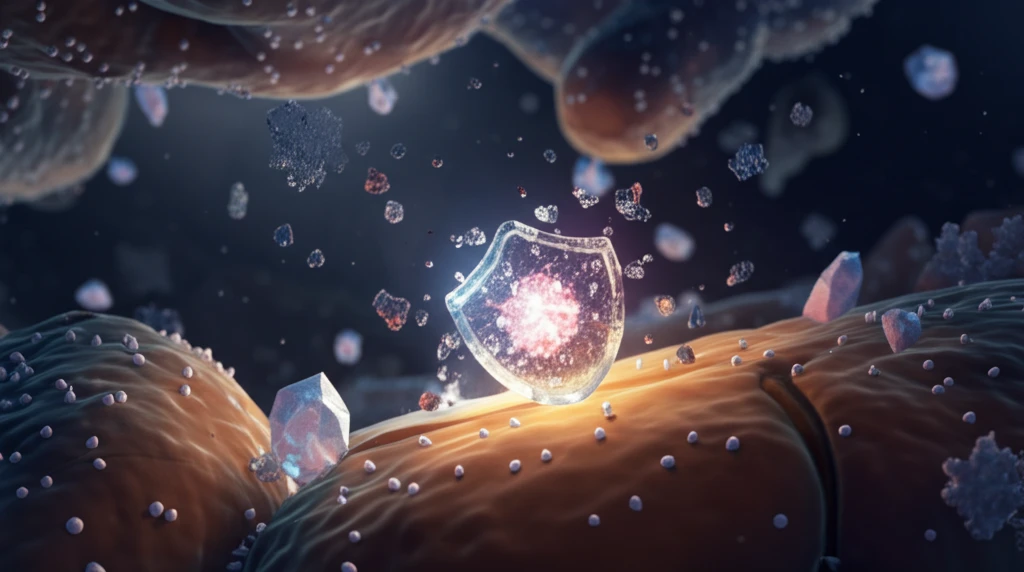
The Unsung Hero of Cellular Survival: How YocM Protects Against Salt Stress
"Discover the surprising role of YocM, a small heat shock protein, in shielding cells from the harsh effects of salt stress and maintaining cellular balance."
Every living cell faces a barrage of environmental challenges, from heatwaves to chemical exposure. One of the most pervasive stressors is salt, which can disrupt cellular function and even lead to cell death. To combat these threats, cells have evolved intricate defense systems, including a class of proteins known as small heat shock proteins (sHsps).
These molecular guardians act as cellular first responders, stabilizing damaged proteins and preventing them from clumping together into harmful aggregates. In the bacterium Bacillus subtilis, a specific sHsp called YocM has emerged as a key player in the fight against salt stress. While sHsps are known to generally protect cells from harm, YocM's role is especially fascinating.
This article explores how YocM uniquely helps Bacillus subtilis cells survive high-salt environments. We will dive into the mechanisms behind YocM's protective actions, shedding light on how this protein maintains cellular equilibrium when the salt levels surge.
YocM: A Cellular Shield Against Salt

Salt stress throws cells into disarray. When a cell is exposed to high salt concentrations, water rushes out, causing the cell to shrink and its internal machinery to become highly concentrated. This crowding effect can force proteins to unfold and clump together, disrupting their normal functions. The accumulation of compatible solutes acts as chemical chaperones, which, together with the protein quality control system, are critical for cellular survival.
- Aggregate Formation: It appears to facilitate controlled protein clumping, which might sound counterintuitive, but helps sequester damaged proteins.
- Stress Response: Triggers cellular defense mechanisms to counteract the effects of salt stress.
- Synergistic Effects: Works in tandem with chemical chaperones, naturally occurring compounds that stabilize proteins.
A New Perspective on Cellular Defense
The discovery of YocM's role in salt stress response adds a new layer to our understanding of how cells adapt and survive in challenging environments. By acting as a molecular chaperone with a unique aggregase activity, YocM orchestrates a complex defense strategy that involves both protein aggregation and stabilization. This novel insight could pave the way for innovative approaches to enhance cellular resilience in various biotechnological and biomedical applications.
